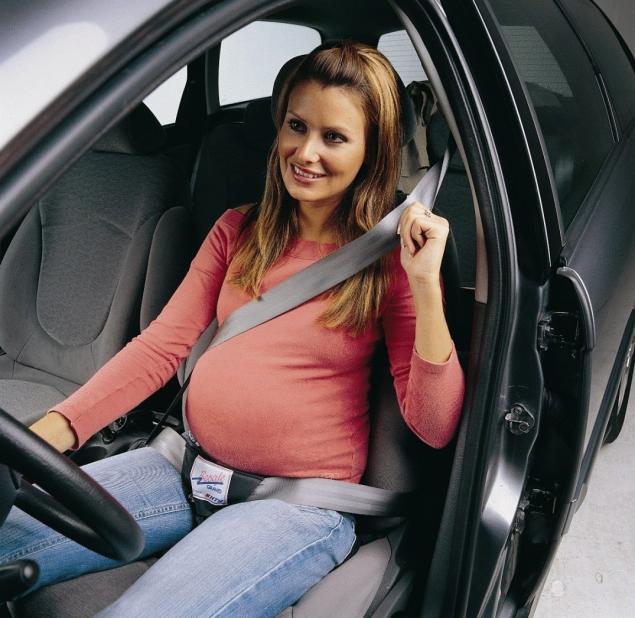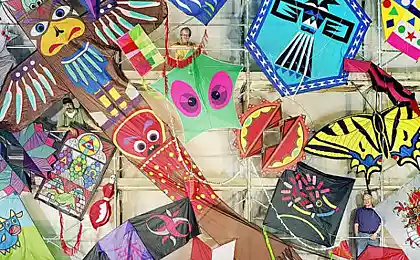517
Tips for pregnant driving
In the world is the number of scientists that soon there will be events and things that they are not subjected to scrutiny and verification. And that's good, because due to their professional curiosity every day we receive answers to our questions. Today it's time to find out whether it is dangerous to get behind the wheel, being "in position", and what's driving position is better to take, not to hurt yourself and the unborn baby.

Donald Redelmeier, Professor in the canadian Institute of Clinical Evaluative Studies conducted an analysis of road accidents involving pregnant women. The obtained data allow to assess the risk of driving a car when you are expecting a baby. The statistical base is impressive: it includes more than 500,000 mothers in Ontario, which was taken four years before and one year after birth. This study is dedicated to the publication of many publications, including the Los Angeles Times and our "Home child".
"Typical pregnancy is associated with fatigue, nausea, insomnia, anxiety and other distracting factors," says Redelmeier. — "They all can affect driving safety".
In database recorded incidents in which the driver was given the necessary medical assistance in the hospital. Before pregnancy, the average monthly number of such accidents in the entire study group was 177, or 4.5 per year per 1,000. The same statistics showed women in the first month of pregnancy. But by the fourth month, the number of the accident begins to grow and reaches 299 per month, or 7.6 cases per year per 1,000. To the last month of gestation, the number drops sharply to 2.7 per 1000 and remains low the entire first year after birth. Interestingly, around the same curve built schedule for pregnant passengers of cars and women pedestrians.

"This does not mean that you need to prevent driving a car during pregnancy," says Professor Redelmeier, — "just as does not mean that a woman should at this time to entrust the driving of their male partners, which — especially young men — make accidents much more often than women. Just women in the second trimester of pregnancy must drive as carefully as they do when they have a big belly or when there is a small child. Just slow down and obey traffic rules".
The American College of obstetrics and gynecology has compiled a list of recommendations regarding driving safety for pregnant women.
In the first place draws attention to the need to fasten the safety belt I I. Some reason to think that it or not necessarily, or is even able to harm the child in the womb. Others are trying to find some "special belts for pregnant women". Neither one nor the other is wrong. A simple strap with three attachment points. It is important that it is correctly secured (see figure).
It is also important that the distance between the belly and the steering wheel was large enough, preferably at least 25, see Sitting behind the wheel, move the seat away. When the stomach is already too large, you need to change the tilt of the steering column so that the steering wheel wasn't looking in the stomach and chest. If you are not able to avoid the accident. Even if you think that the accident is trifling, still call your doctor. Let them play and make sure the baby's heartbeat is normal.
The lack of visible damage does not mean that the accident passed without consequences. According to statistics, have been in accident women often happen to premature birth. In addition, there are other, unseen damage. For example, it may become a placental abruption.
Source
Source: /users/1081

Donald Redelmeier, Professor in the canadian Institute of Clinical Evaluative Studies conducted an analysis of road accidents involving pregnant women. The obtained data allow to assess the risk of driving a car when you are expecting a baby. The statistical base is impressive: it includes more than 500,000 mothers in Ontario, which was taken four years before and one year after birth. This study is dedicated to the publication of many publications, including the Los Angeles Times and our "Home child".
"Typical pregnancy is associated with fatigue, nausea, insomnia, anxiety and other distracting factors," says Redelmeier. — "They all can affect driving safety".
In database recorded incidents in which the driver was given the necessary medical assistance in the hospital. Before pregnancy, the average monthly number of such accidents in the entire study group was 177, or 4.5 per year per 1,000. The same statistics showed women in the first month of pregnancy. But by the fourth month, the number of the accident begins to grow and reaches 299 per month, or 7.6 cases per year per 1,000. To the last month of gestation, the number drops sharply to 2.7 per 1000 and remains low the entire first year after birth. Interestingly, around the same curve built schedule for pregnant passengers of cars and women pedestrians.

"This does not mean that you need to prevent driving a car during pregnancy," says Professor Redelmeier, — "just as does not mean that a woman should at this time to entrust the driving of their male partners, which — especially young men — make accidents much more often than women. Just women in the second trimester of pregnancy must drive as carefully as they do when they have a big belly or when there is a small child. Just slow down and obey traffic rules".
The American College of obstetrics and gynecology has compiled a list of recommendations regarding driving safety for pregnant women.
In the first place draws attention to the need to fasten the safety belt I I. Some reason to think that it or not necessarily, or is even able to harm the child in the womb. Others are trying to find some "special belts for pregnant women". Neither one nor the other is wrong. A simple strap with three attachment points. It is important that it is correctly secured (see figure).
It is also important that the distance between the belly and the steering wheel was large enough, preferably at least 25, see Sitting behind the wheel, move the seat away. When the stomach is already too large, you need to change the tilt of the steering column so that the steering wheel wasn't looking in the stomach and chest. If you are not able to avoid the accident. Even if you think that the accident is trifling, still call your doctor. Let them play and make sure the baby's heartbeat is normal.
The lack of visible damage does not mean that the accident passed without consequences. According to statistics, have been in accident women often happen to premature birth. In addition, there are other, unseen damage. For example, it may become a placental abruption.
Source
Source: /users/1081























